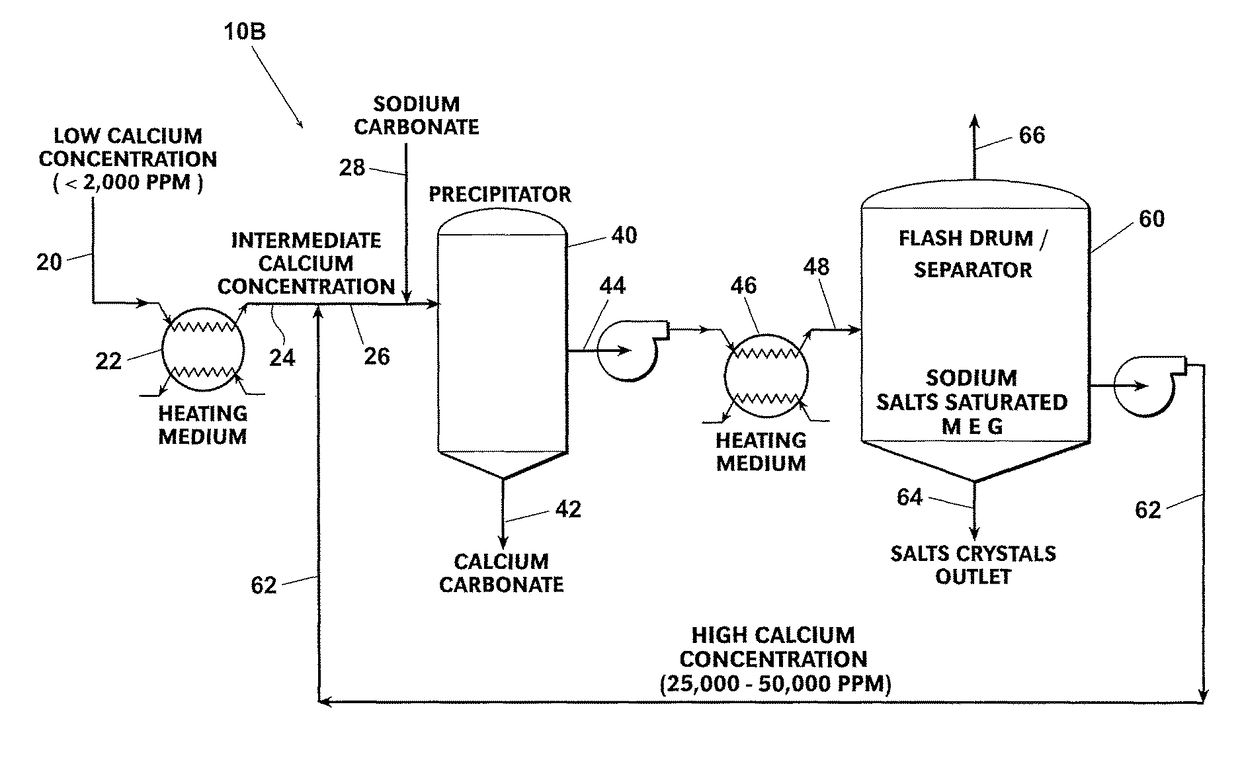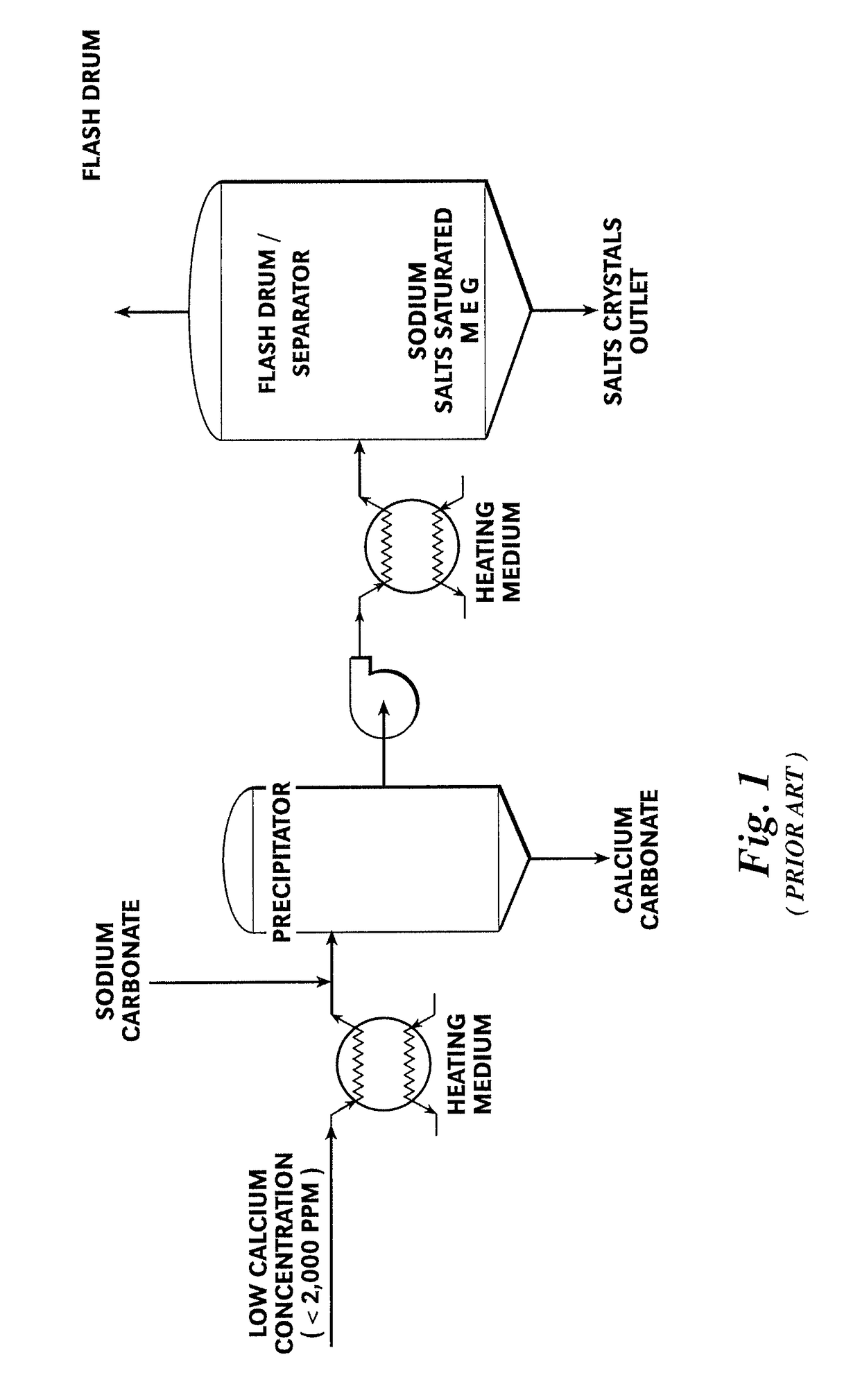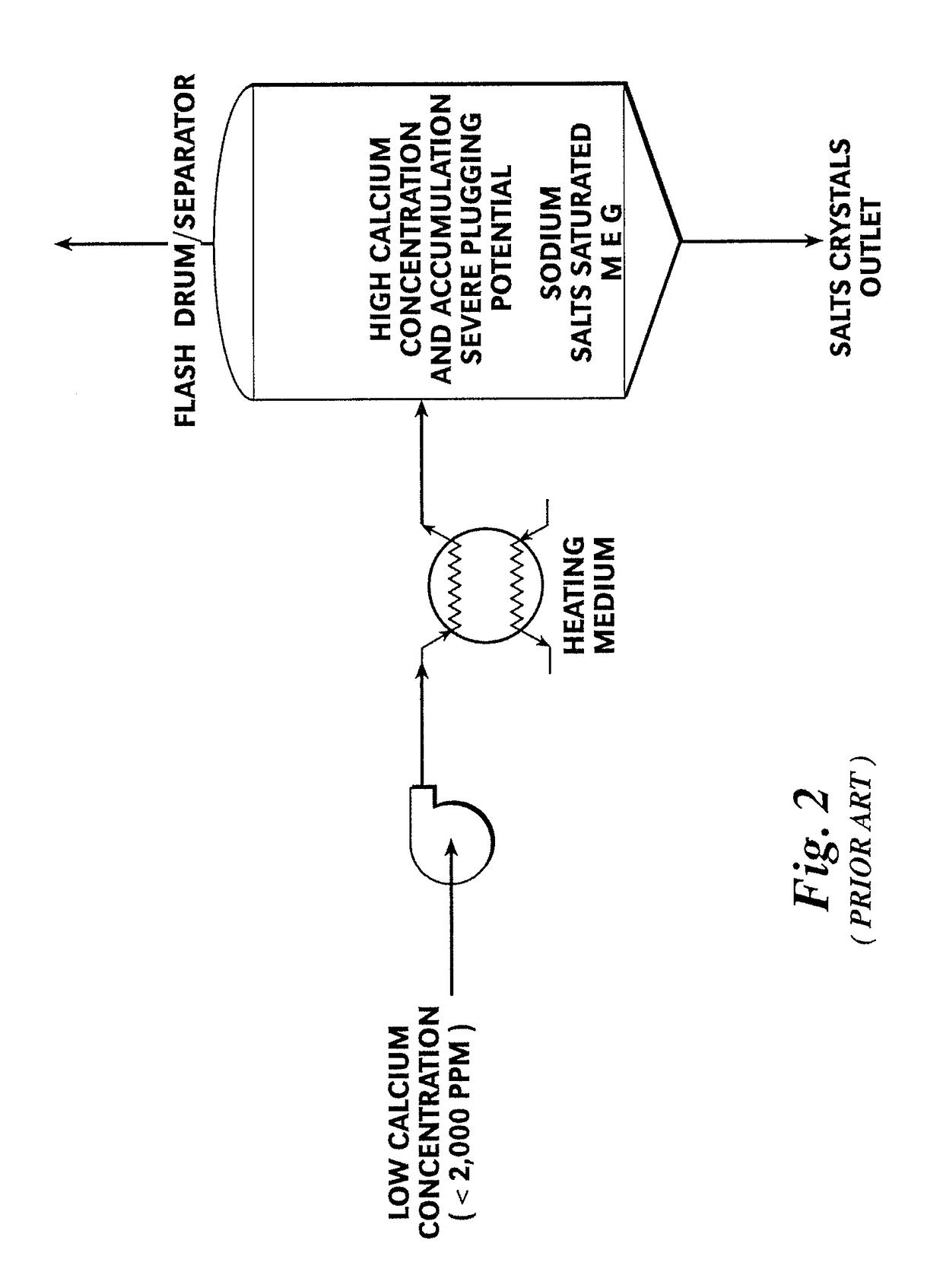Process scheme to improve divalent metal salts removal from mono ethylene glycol (MEG)
a divalent metal salt and process technology, applied in the field of process schemes to improve the removal of divalent metal salts from mono ethylene glycol, can solve the problems of complex structure, difficult to achieve the effect of reducing the amount of divalent metals
- Summary
- Abstract
- Description
- Claims
- Application Information
AI Technical Summary
Benefits of technology
Problems solved by technology
Method used
Image
Examples
Embodiment Construction
[0044]Referring first to FIG. 3, a preferred embodiment of a MEG reclamation process 10A practiced according to this invention begins with a fresh, wet (rich) MEG feed stream 20 which is then heated by way of a heating medium 22 to form a pre-heated fresh feed stream 24. Fresh feed stream 20 is typically low in calcium concentration (less than 2,000 ppm). The pre-heated fresh feed stream 24 is mixed with a slipstream 62 that has been removed from a liquid inventory of a flash drum or separator 60 to form a precipitator feed stream 26. A precipitating agent 28, preferably sodium carbonate, is added to the precipitator feed stream 26.
[0045]Mixing slipstream 62 with the pre-heated fresh feed stream 24 increases the calcium concentration of the precipitator feed stream 26 above that of initial fresh feed stream 20 but below that of slipstream 62. In general terms, the calcium concentration of precipitator feed stream 26 is in a range of about 10,000 to 30,000 ppm. However, the exact cal...
PUM
| Property | Measurement | Unit |
|---|---|---|
| concentration | aaaaa | aaaaa |
| temperature | aaaaa | aaaaa |
| insoluble | aaaaa | aaaaa |
Abstract
Description
Claims
Application Information
 Login to View More
Login to View More - R&D
- Intellectual Property
- Life Sciences
- Materials
- Tech Scout
- Unparalleled Data Quality
- Higher Quality Content
- 60% Fewer Hallucinations
Browse by: Latest US Patents, China's latest patents, Technical Efficacy Thesaurus, Application Domain, Technology Topic, Popular Technical Reports.
© 2025 PatSnap. All rights reserved.Legal|Privacy policy|Modern Slavery Act Transparency Statement|Sitemap|About US| Contact US: help@patsnap.com



